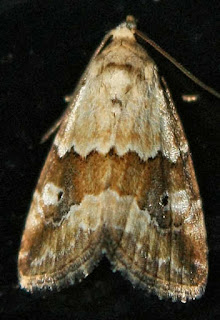Mocis Species moths
Mocis alterna EREBINAE EREBIDAE
Sometimes called a Bean Looper.Mocis alterna are native to Australia. Common in northern Australia, northwestern parts of Western Australia, Northern Territory, in Queensland, and northern New South Wales. Mostly in coastal regions.
Larvae food is mostly foliage in Soybeans ( Glycine max, FABACEAE ), also Green Beans (Phaseolus species, FABACEAE ) and Lucerne (Medicago sativa, FABACEAE ).
 Family:- EREIBIDAE
Family:- EREIBIDAESub Family:- EREBINAE
Genus:- Mocis
Species:- alterna
Showing the hind wings.
Pale version.
The eggs hatch in 3-6 days. There are six larval stages. Larvae take 2-3 weeks to develop before pupating under leaves in a loose silken cocoon.
***********************************************************************************
Mocis frugalis EREBINAE EREBIDAE
Sometimes called a Sugarcane Looper.This moth is also common through the northern parts of Australia, northwestern parts of Western Australia, Northern Territory, Queensland, and northern New South Wales. Mostly in coastal regions.
The life cycle is pretty much the same as M. alterna above. It is also a minor pest on Soy Bean but prefers grasses and other plants listed below.
Mocis frugalis feed on grasses (POACEAE) and sometimes sugar cane (Saccharum officinarum, POACEAE) and Oats (Avena species, POACEAE) and various Grasses ( POACEAE ).
Family:- EREBIDAE
Sub Family:- EREBINAE
Genus:- Mocis
Species:- frugalis
***********************************************************************************























